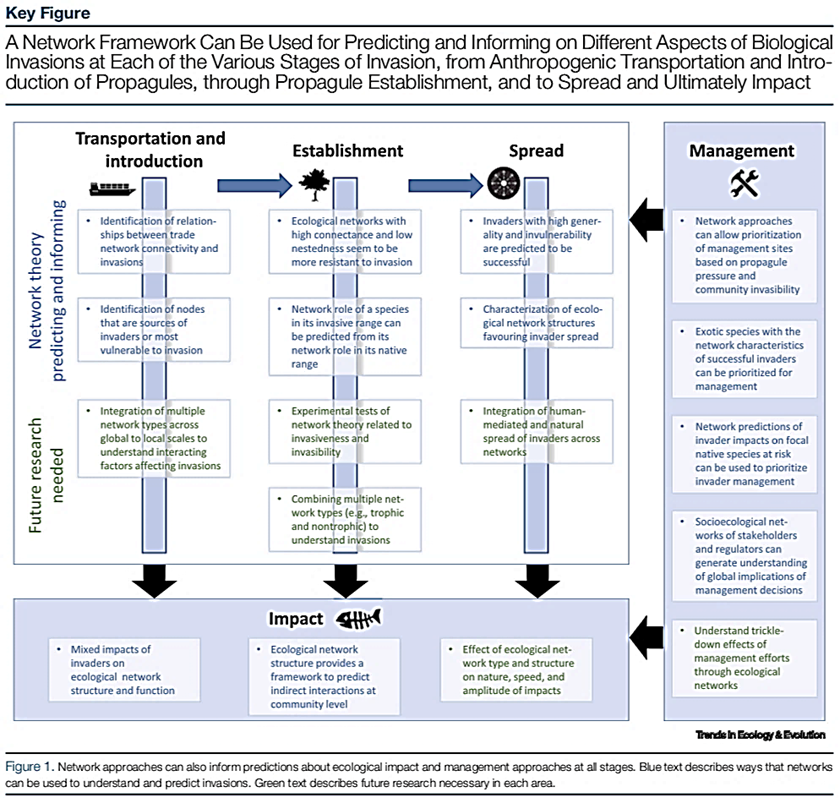Understanding and predicting biological invasions is challenging because of the large number and complexity of interacting players. A recent study by a team of international researchers, including former C·I·B post-doctoral associate Wolf-Christian Saul, reviews the findings from network ecology that show the most promise for the development of new tools for prevention and management of invasions, and identifies pressing needs for future research.
Ecological networks are used to describe sets of organisms (usually at species-level) and their ecological interactions in natural communities. Our understanding of how ecological networks relate to the abiotic environment, human-induced influences, ecosystem stability, and ecosystem functioning is rapidly increasing, as well as the availability of network data and analytical approaches. However, although recent research begins to integrate networks into invasion biology, according to the authors, their great potential utility in invasion prevention or management has not yet found the attention it deserves.
The review outlines the most promising ways in which network theory can inform us on every key aspect of invasion: where potential invaders may come from, which exotic species are most likely to become invasive, which ecosystems are most invasible, and what an invader’s likely ecological impacts will be (Figure 1). The review highlights, amongst other things that although invasive species often do not seem to greatly alter network structure or stability per se, they take up central, highly connected positions once they have reached high abundance. Thus, they are in the position to operate as important players within ecological networks.
The authors therefore advocate a strong focus on species-level network characteristics in future research, meaning the typical structure (static or dynamic) of invaders’ interactions with other species. An important question is whether there exists a set of particular species-level network characteristics that allow a new species to successfully invade across mutualistic and antagonistic networks.
“In our view,” says Wolf-Christian Saul, “network theory has great potential to significantly advance our understanding of biological invasions and their management. Research is beginning to take notice of this and is gradually intensifying efforts in this direction. Our review aims to support and accelerate this important development.”
Read the paper in Trends in Ecology & Evolution
Frost, C.M., Allen, W.J., Courchamp, F., Jeschke, J.M., Saul, W.-C. & Wardle, D.A. (in press) Using network theory to understand and predict biological invasions. Trends in Ecology & Evolution. https://doi.org/10.1016/j.tree.2019.04.012
For more information, contact Wolf Saul at wcsaul@gmx.net



